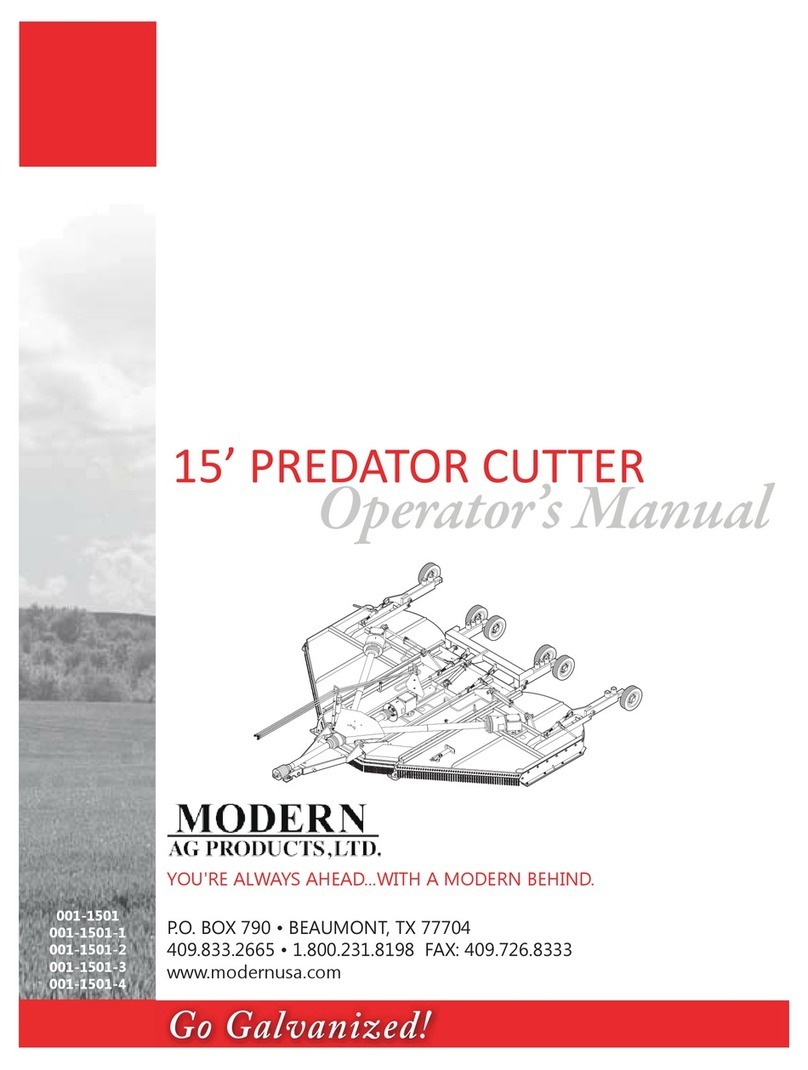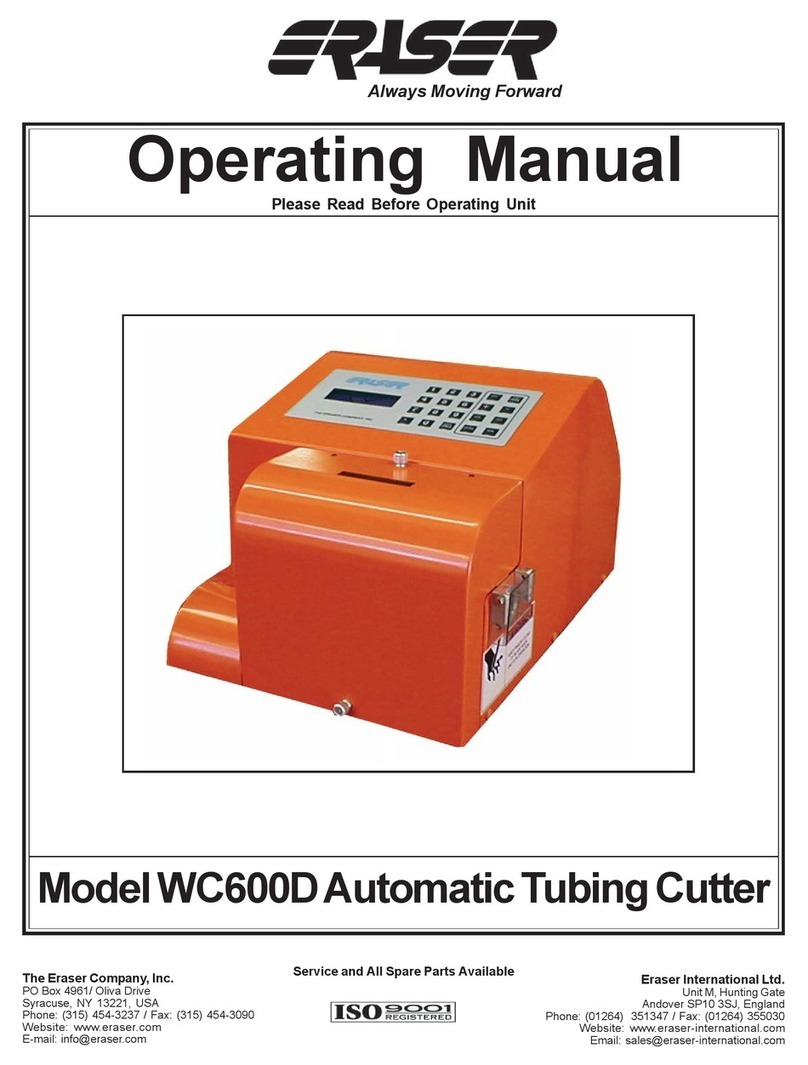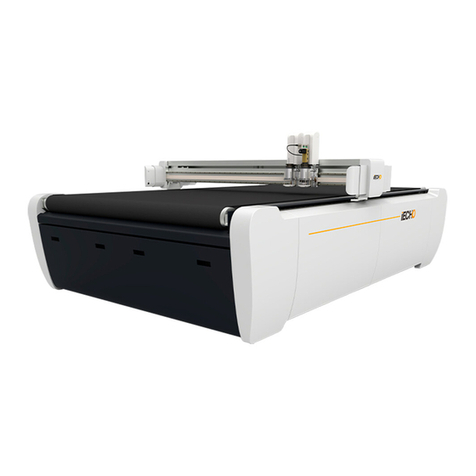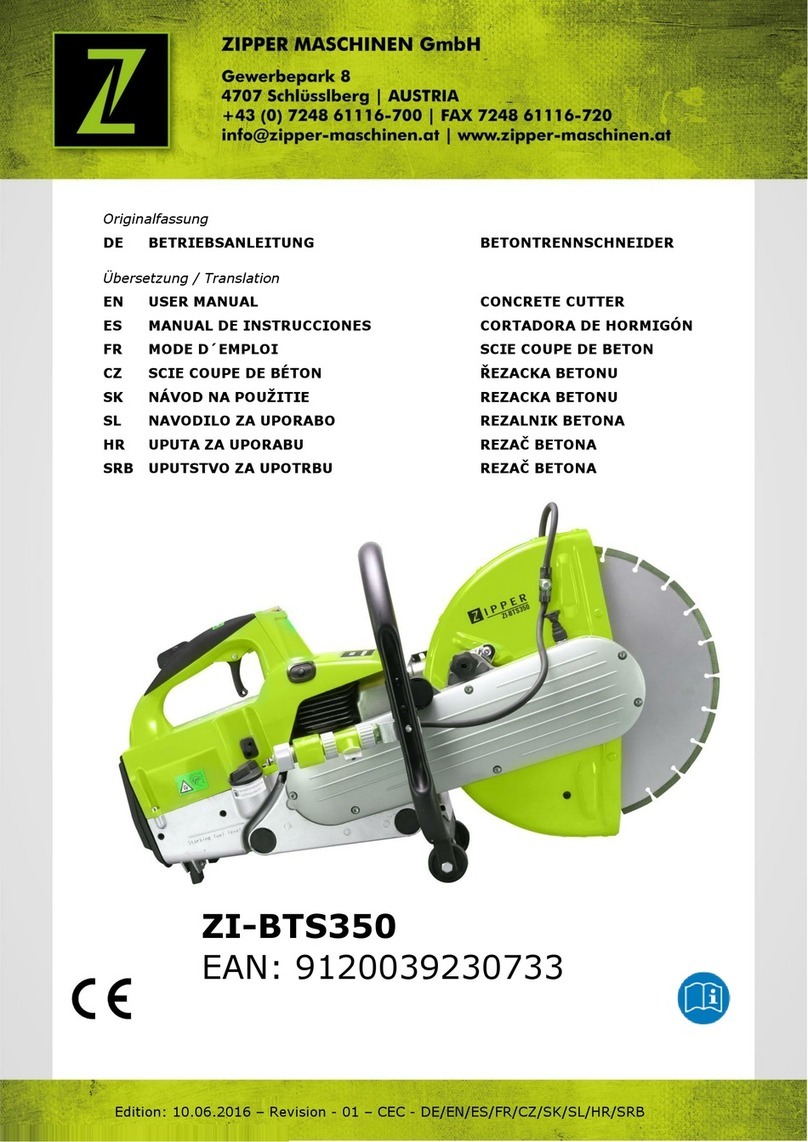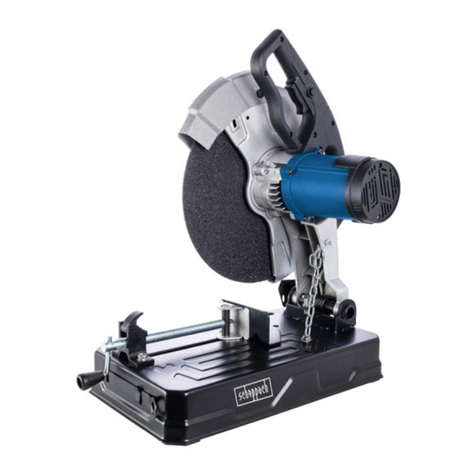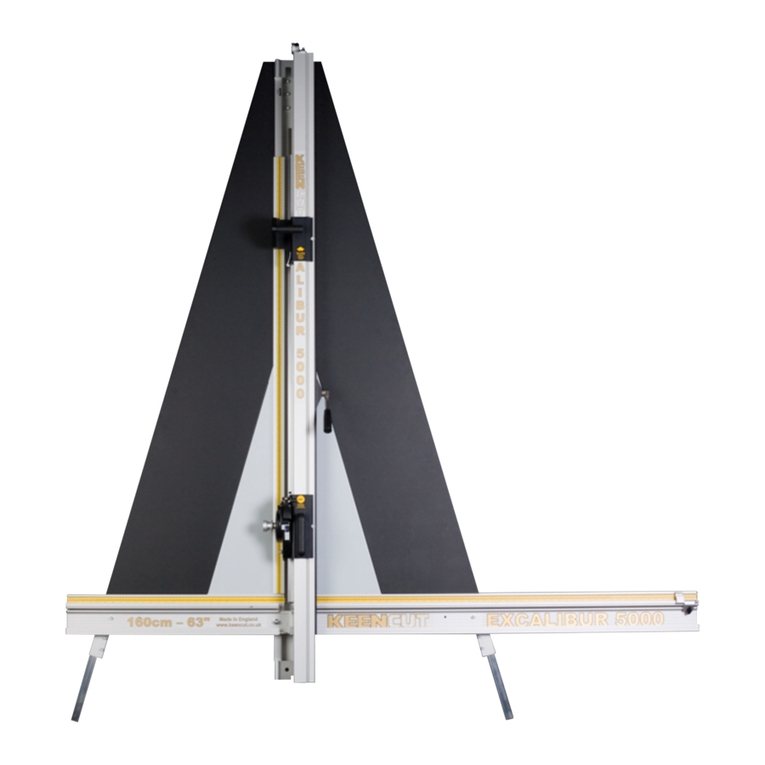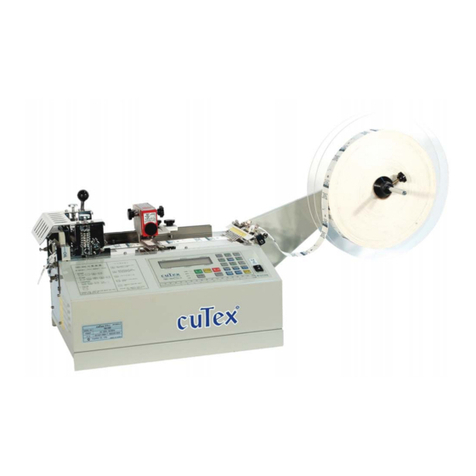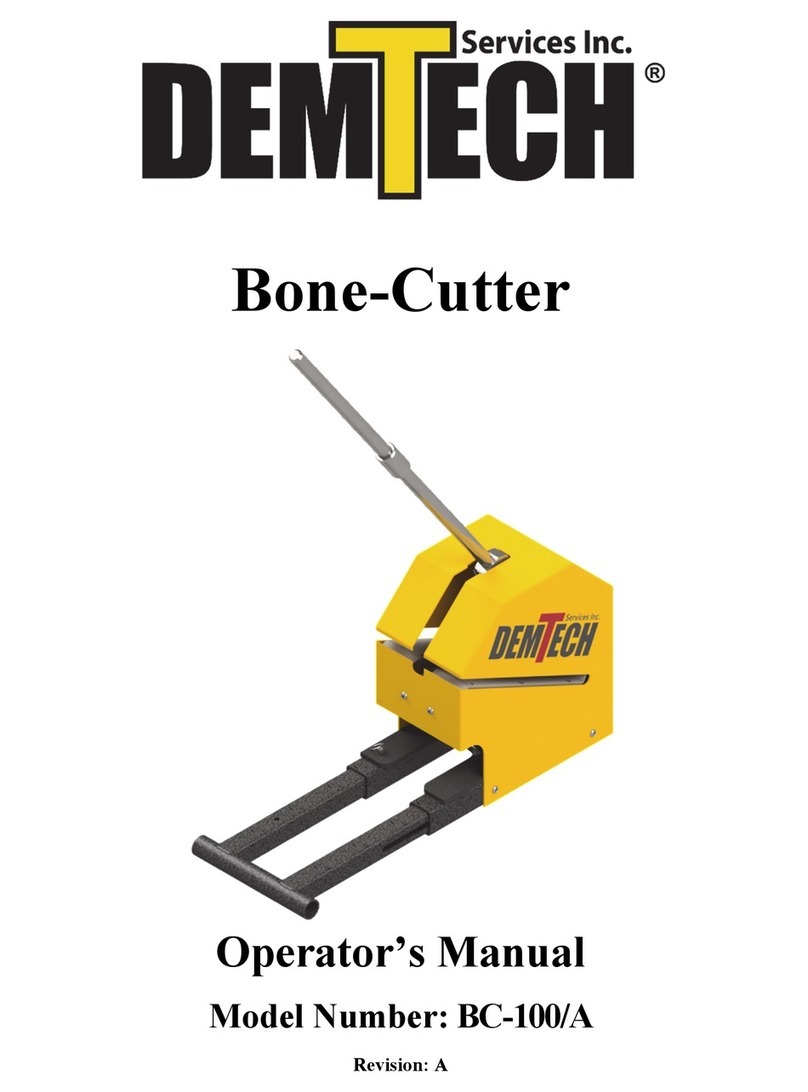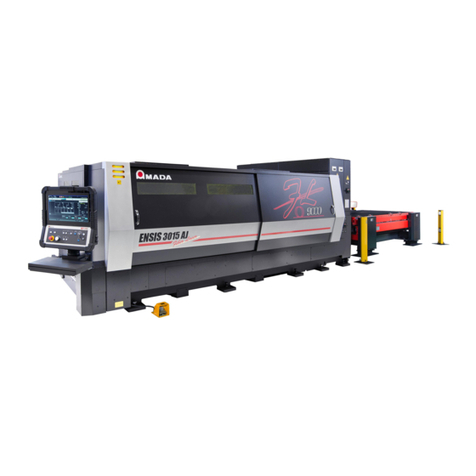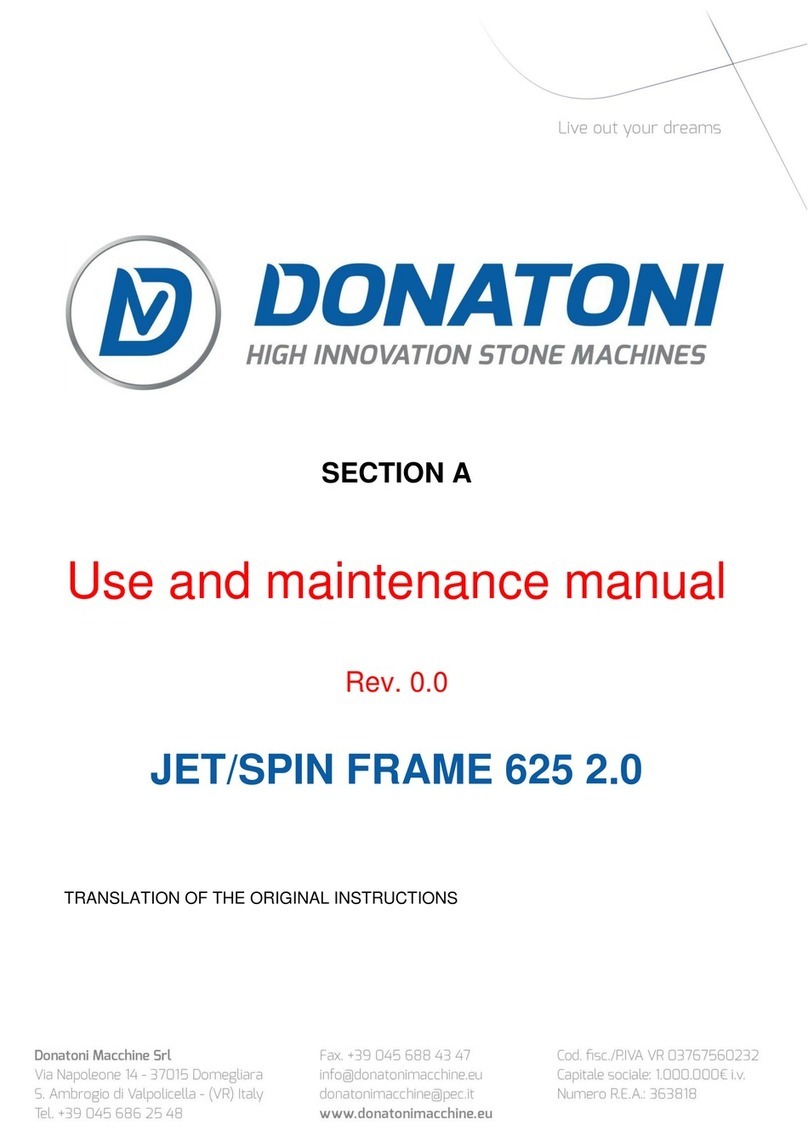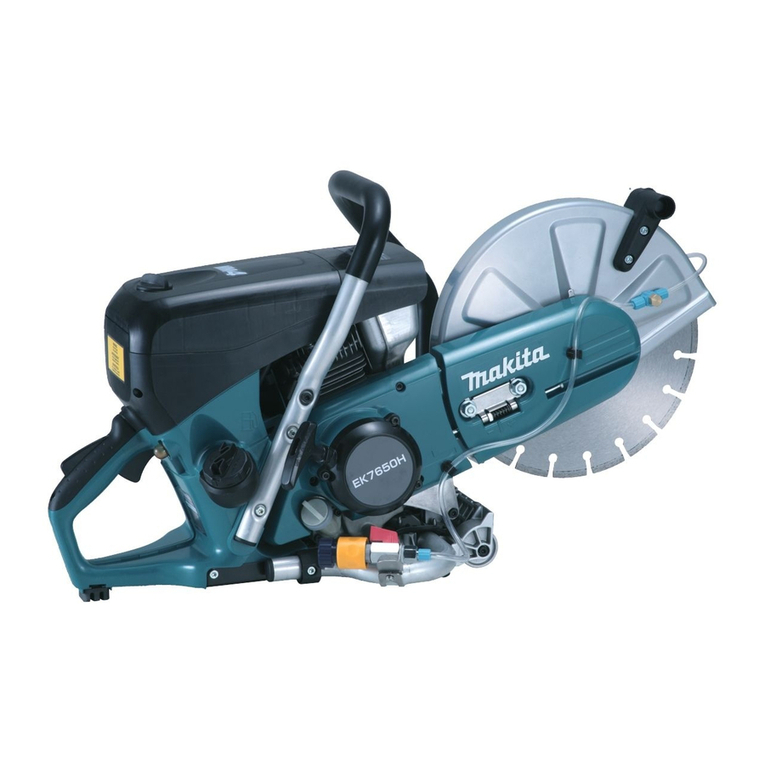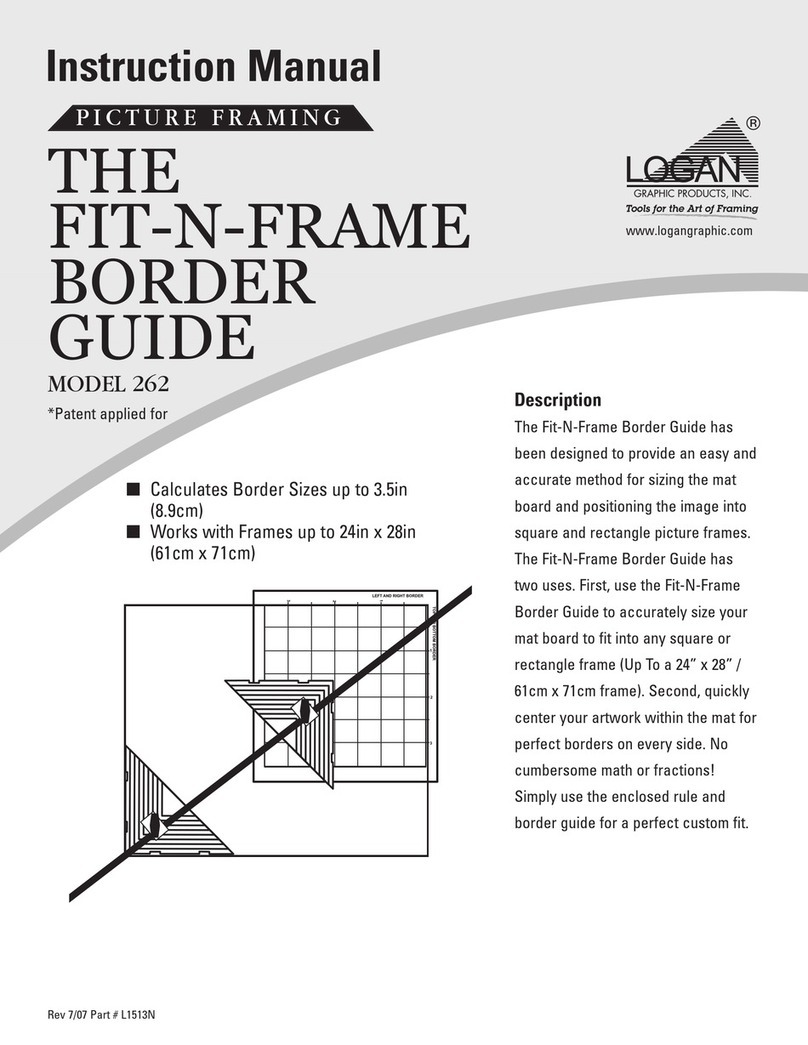Sirman Athos User manual

16
7.3 - FOOT SUPPORTS
In time the foot supports can detriorate loosing their elastic properties causing
instability. If this is the case replace them.
7.4 - POWER SUPPLY LINE
Periodically check wear in the power cable and if necessary contact the
“SERVICE CENTRE” for a replacement.
7.5 - PUSH BUTTON LABEL
In time the label on the controls could become marked or even damaged. If this
should happen contact the “SERVICE CENTRE” for a replacement.
CHAP.8 - SCRAPPING
8.1 - OUT OF SERVICE
If the appliance for some reason is to be put out of service, make sure it can no
longer be used: disconnect and remove all electrical connections.
8.2 - SCRAPPING
Once the appliance is out of service it can be scrapped. Contact a specialised
company to scrap it conforming to the materials used for manufacturing the
various components. (refer to chap.1 para. 3.2).
SERVICE CENTRE
AUTHORISED DEALER
1
USE AND MAINTENANCE INSTRUCTION MANUAL
ATHOS “CE”
PROFESSIONAL

2
INTRODUCTION
• This instruction manual gives the customer all the necessary information
about the appliance and the manufacturing standards applied, as well as all
instructions for use and maintenance so that the appliance can be used
correctly maintaining its efficiency in time.
• This instruction manual is for the end user and for service personnel.
INDEX
CHAP. 1 - INFORMATION ABOUT THE APPLIANCE pag. 4
1.1 - GENERAL WARNINGS
1.2 - SAFETY FEATURES INSTALLED
1.2.1- mechanical safety protections
1.2.2- electrical safety protections
1.3 - APPLIANCE DESCRIPTION
1.3.1- general description
1.3.2- constructive characteristics
1.3.3- appliance elements
CHAP. 2 - TECHNICAL DATA pag. 7
2.1 - OVERALL DIMENSIONS, WEIGHT, CHARACTERISTICS ...
CHAP. 3 - CONSIGNING THE APPLIANCE pag. 8
3.1 - TRANSPORTING THE APPLIANCE
3.2 - CHECKING PACKAGING UPON CONSIGNMENT
3.3 - DISPOSING OF PACKAGING
CHAP. 4 - INSTALLING THE APPLIANCE pag. 9
4.1 - APPLIANCE LOCATION
4.2 - CONNECTING TO ELECTRICITY SUPPLY
4.2.1- MOZZARELLA CHEESE cutter with a single-phase motor
4.2.2- MOZZARELLA CHEESE cutter with a three-phase motor
4.3 - WIRING DIAGRAMS
4.3.1- wiring diagram for single-phase
4.3.2- wiring diagram for three-phase
4.4 - FUNCTIONAL CHECK
CHAP. 5 - USING THE APPLIANCE pag. 12
5.1 - CONTROLS
5.2 - FILLING THE APPLIANCE
5.3 - MOUNTING AND REMOVING DISKS
15
CHAP. 7 - MAINTENANCE
7.1 - GENERALITIES
Before servicing the appliance you must disconnect the electricity supply plug
isolating the appliance from the main power source.
7.2 - BELT
The belt does not require any type of adjustment. Normally, after three or four
years it should be replaced. In this case contact your “SERVICE CENTRE”.
3
1
2
4
FIG. n°12 - removing food tray & pestle
12
FIG.n°14 - diagram of appliance stripped for cleaning
FIG.n°13 - removing disk/disk holder

14
CHAP. 6 - REGULAR CLEANING
6.1 - GENERALITIES
• the appliance must be cleaned at least once a day or if necessary more than
once.
• scrupulously clean all the various components of the appliance whether they
come in direct contact with the food product or not.
• never clean the appliance with a pressurised water-jet or industrial cleaner
brushes or any other type of cleaning utensil that could damage the surface of
the appliance. Clean and wash using water and neutral detergents.
• Before cleaning you must remove the electricity supply plug isolating the
appliance from the main power circuit.
CAUTION there are residual risks such as the risk of being cut by the disks or
sharp elements.
6.2 - PROCEDURE TO FOLLOW FOR CLEANING THE APPLIANCE
6.2.1 - cleaning the food tray and pestle (see FIG.n°12)
The food tray and pestle can be easily removed:
- to remove the pestle (1) pull it out of the food inlet;
- at this point by lifting the tray both pestle and tray come away (2)
- carefully wash these components with a neutral detergent and frequently rinse
with clean warm water.
6.2.2 - cleaning the disk and disk holder (see FIG.13)
To remove the disk and disk holder follow the below instrcutions:
- raise the outlet protective cover (1) and unscrew the wing nut (2);
- at this point remove the disk (3);
- unscrew the knob (4) by turning it anti-clockwise;
- remove the disk holder
At this point wash all the components using a netural detergent and frequently
rinse with clean warm water.
6.2.3 - cleaning the main structure (see FIG. 14)
To clean the main structure (where it is) use a damp cloth and remember to
frequently rinse it with clean warm water. Once all components are washed, dry
them well.
3
CHAP. 6 - REGULAR CLEANING pag. 15
6.1 - GENERALITIES
6.2 - PROCEDURE TO FOLLOW FOR CLEANING THE APPLIANCE
6.2.1- cleaning the food tray and pestle
6.2.2- cleaning the disk and disk holder
6.2.3- cleaning the main structure
CHAP. 7 - MAINTENANCE pag. 15
7.1 - GENERALITIES
7.2 - BELT
7.3 - FOOT SUPPORTS
7.4 - POWER SUPPLY CABLE
7.5 - PUSH BUTTON LABEL
CHAP. 8 - SCRAPPING pag. 16
8.1 - OUT OF SERVICE
8.2 - SCRAPPING
FIGURE INDEX
FIG. n°1 - general view of the appliance pag. 6
FIG. n°2 - overall dimensions pag. 7
FIG. n°3 - packaging pag. 8
FIG. n°4 - technical data and serial number plate pag. 9
FIG. n°5 - disk rotation pag. 10
FIG. n°6 - wiring diagram single-phase pag. 11
FIG. n°7 - wiring diagram three-phase pag. 11
FIG. n°8 - controls pag. 12
FIG. n°9 - filling the appliance pag. 13
FIG. n°10 - correct position pag. 13
FIG. n°11 - mounting and removing disks pag. 13
FIG. n°12 - removing the food tray and pestle pag. 15
FIG. n°13 - removing the disk and disk holder pag. 15
FIG.n°14 - diagram of appliance stripped for cleaning pag. 15

4
CHAP. 1 - INFORMATION ABOUT THE APPLIANCE
1.1 - GENERAL WARNINGS
• The appliance must only be used by personnel who has carefully studied this
manual and understood all the safety standards described herein.
• If there should be a turnover in personnel, it is necessary that this manual is
carefully studied before using the appliance.
• Before cleaning or servicing the appliance, disconnect the electricity power
supply.
• When cleaning or servicing the appliance (safety protections removed) take
into consideration all possible hazards- Residual Risks.
• When servicing or cleaning the appliance always concentrate on what you are
doing and avoid any possible distractions.
• Check the electricity power cable on a regular basis; a worn or damaged cable
causes a dangerous electrical hazard.
• If the appliance has a presumed malfunction or does not work correctly, do not
use it or repair it. Contact the “Service Centre”. Details given on back page.
• Do not use this appliance for frozen food products, meat and fish with bones
and non-food products.
• Do not put your fingers into the appliance when working.
• The manufacturer cannot be held responsible for the following situations:
⇒ if the appliance or safety devices are tampered with byunauthorised personnel
⇒ if non original spare parts are used;
⇒ if the instructions given in this manual are not carefully and correctly
followed or respected;
⇒ if unsuitable cleaning products are used to clean the appliance.
1.2 - SAFETY FEATURES INSTALLED
1.2.1 - mechanical safety features
Regarding the mechanical safety featrures the appliance described herein
conforms with the EU directives EEC 89/392 and EEC 91/368, 92/31, 93/44,
93/68.
These protections are (refer to 1.3.3):
- outlet protective cover;
- food inlet;
- pestle.
1.2.2 - electrical safety features
Regarding electrical safety features, this appliance conforms to the EU directives
EEC 73/23, 89/336, EEC 91/368, 92/31, 93/44, 93/68 and to standards EEC EN
60335-1, EN 55014.
13
FIG. n°11 - Mounting and removing disks
5.3 - MOUNTING AND REMOVING CUTTER DISKS (see FIG. n°11)
CAUTION
:When mounting the cutter disks carefully follow the below instruc-
tions:
1. raise the protection (1);
2. unscrew the wing nut (2) that secures the disk onto (3) the motor shaft;
3. change disks and then invert the procedure to secure the new disk into posi-
tion.
3
1
2
2
13
FIG. n°9 -Filling FIG. n°10 - Correct position

12
FIG. n°8 - Controls
CHAP. 5 - USING THE APPLIANCE
5.1 - CONTROLS
The controls for the mozzarella cheese cutter are shown in the below diagram.
5.2 - FILLING THE MOZZARELLA CHEESE CUTTER (see FIG. n°8)
N.B. Fill the appliance when turned off:
The procedure is as follows:
1. fill the food tray (1);
2. press the start button “I” (see 5.1);
3. Always stand in the correct position to avoid accidents. Your body must be
perpendicular to the work surface ( see FIG. n°10 ); do not put your hands into
the food inlet when the appliance is working. Always use the pestle.
Be careful that your body or any part of it does not come in contact with
the mozzarella cheese cutter when working.
4. raise the pestle (2);
5. fill the food inlet (3) using the pestle;
6. when you have finished cutting press the stop button “0” (see 5.1).
1 - start button “I”.
2 - stop button “0”.
1
2
4.4 - FUNCTIONAL CHECK
To check the appliance works correctly proceed as follows:
1. press the start button “I” and the stop button “0” (see FIG.8);
2. check if raising the outlet protective cover the appliance stops;
3. facing the disk make sure it rotates anti-clockwise.
5
The mozzarella chesse cutter is fitted out with:
• micro-switch automatically stops the appliance when outlet protective cover
(see FIG. n°1) is removed. The appliance will not start if the cover is not
replaced in its correct position;
• electromagnetic switch on the outlect protective cover;
• relays in the command circuit for restarting the appliance if there is a power
cut;
Although the mozzarella cheese cutter CE Professional is fitted out with
electrical and mechanical safety protections that conform to the standards in
force (these protections are for when the appliance is working and when it is
being cleaned or serviced) there are however, RESIDUAL RISKS (EEC 89/392
point 1.7.2) that cannot be completely eliminated and are indicated by the
wording CAUTION in this manual. These risks refer to the risk of being cut or
injured when mounting (see 5.3) and cleaning the cutter disks or while cleaning
the appliance.
1.3 - APPLIANCE DESCRIPTION
1.3.1 -General Description
- We have designed and manufactured the mozzarella cheese cutter CE
Professional for cutting food products (such as mozzarella cheese, carots,
potatoes, mushrooms) guaranteeing:
- the maximum of safetywhen using, cleaning and servicing;
- the maximum of hygiene thanks to a meticulous selection ofthe materials that
come in contact with the food product, and thanks to the elimination of any
sharp and rough edges that come in contact with the product, cleaning is easy
and thorough and the appliance can be easily stripped;
- robust and stable components and structure;
- maximum reduced noise level thanks to the belt transmission;
- easy to handle.
1.3.2 - Constructive Characteristics
The mozzarella cheese cutter is made from AISI 304 stainless steel and anodised
aluminium for food appliances. These metals are ideal regarding hygiene
purposes, they are also acid and salt resistant and are also rust proof.
The disks are in rectified and tempered cutlery steel (AISI 420)
The outlet protective cover is made from ABS.

6
1.3.3 - Appliance Components
FIG. n°1 - general view of the appliance
(14) (12)
(13)
11
10
9
6
7
3
1
2
4
5
8
15
LEGEND:
1 - Base 9 - Technical data & serial n° plate
2 - Controls 10 - Power supply cable
3 - Knob for securing disk holder 11 - Foot supports
4 - Casing 12*- Food tub
5 - Food tray 13*- Cutter disk for chips
6 - Pestle 14*- Cutter disk for mushrooms
7 - Disk holder 15 -Outlet protective cover
8 - Disk
Items 12*;13*;14* are not supplied with the appliance, they can be supplied as
11
Power source sinphase 230V/50Hz
TRANSFORMER
CONDENSER
BROWN
BROWN
BLACK
BLACK
MOTOR RELAY
BRAWN
BLUE
YELLOW
GREEN
MICROSWITCH ON BLADE GUARD
POLARITY
SIGN
METAL STRIP
4.3 - WIRING DIAGRAMS
4.3.1 - Wiring diagram for single-phase
FIG. n°6 - Wiring diagram Mn
4.3.2 - Wiring diagram three-phase
POWER SOURCE THREE-PHASE 380V/50Hz
THREE-PHASE 380V/50Hz
MICROSWITCH ON
BLADE GUARD
CARD COMPONENTS SIDE
RELAY
TRANSFORMER
BROWN
BROWN
BLACK
BROWN
BLUE
BLACK
THREE-PHASE 230V.
BROWN
BROWN
BLUE
BLUE
BLACK
BLACK
MOTOR
CARD COMPONENTS SIDE

10
4.2.2 - Mozzarella cheese cutter with a three-phase motor
The mozzarella cheese cutter comes supplied with a 5 x 1,5 mm² section
(thickness) and ≅ 1.5 m. long power cable.
Use a CEI (red) plug to connect the appliance to a three-phase supply 400V./
50Hz source , interposing a differential thermo-magnetic switch type 10 A, ∆I =
0.03 A.
At this point make sure the earth circuit functions correctly.
Before actually connecting the appliance to the three-phase power supply, check
that the disk turns in the right direction. To do this, press the start button “I”
(see FIG. n.°8) and then immediately press the stop button “0”.
The disk should turn in an anti-clockwise direction when facing it (see FIG. 5): if
rotation is incorrect invert two of the three power supply wires either in the plug
or in the socket
The three-phase motor mounted on the mozzarella cheese cutter can run off a
230 V. three-phase tension or off a 400V tension supply.
Unless otherwise specified, all connections are for a 400V supply. If the appliance
has to be adapted to a 230V three-phase circuit call the “SERVICE CENTRE ”
for assistance.
FIG. n°5 - Disk rotation
7
CHAP. 2 - TECHNICAL DATA
2.1 - MEASUREMENTS, WEIGHT, CHARACTERISTICS ...
FIG. n°2 - Overall dimensions
Model u.m. ATHOS
Length A mm 570
Width B mm 230
Height C mm 590
Disk revolutions rev/1’ 400
Motor HP
W0,3
210
Power supply Mn
Tf 230V / 50Hz
230 - 400V / 50Hz
Net weight Kg 14
Noise level dB ≤ 60
TAB. n°1 - MEASUREMENTS AND TECHNICAL CHARACTERISTICS
CAUTION: the appliance is designed for the electrical specifications given on
the plate applied to the rear of the appliance; before connecting to the electricity
power supply refer to chapter 4.2 connecting to the electricity supply
B
C
A

8
CHAP. 3 - CONSIGNING THE APPLIANCE
3.1 - TRANSPORTING THE APPLIANCE (see FIG. n°3)
The mozzarella cheese cutter leaves our warehouse carefully packed; packaging
consists in:
a) a resistant cardboard box;
b) the appliance;
c) food tray;
d) upon specific request the cutter disks;
e) upon specific request the food tub;
f) this manual;
g) CE Certificate of Conformity;
FIG. n°3 - Packaging
a) b)
c)
d)
e)
f) g) h)
9
3.2 - CHECKING PACKAGING UPON CONSIGNMENT
When the goods are received proceed with opening the packaging if there are no
signs of damage, and make sure that inside there are all the listed items (see Fig.
n°3). If when the goods are delivered there are signs of damage to the packaging,
such as dents or if they have been dropped, immediately inform the forwarding
agent or courier, and within three days from the date indicated on the documents
draw up a detailed list and report of all damage to the goods. Do not turn the
packed goods upside down!! When transporting the package make sure its four
main points are firmly secured (maintain the goods parallel to the ground).
3.3 - DISPOSING OF PACKAGING
The various items used for packaging (cardboard, pallets, plastic straps,
polyurethane foam) are normal urban waste products and can be disposed of
without difficulty.
If the appliance is destined to countries where there are specific standards
regarding waste, dispose of packaging respecting the standards and laws in force.
CHAP. 4 INSTALLING THE APPLIANCE
4.1 - APPLIANCE LOCATION
The work surface where the appliance will be located must be suitable for its size
, please refer to the measurements given in Tab. 1. The work surface must be level
dry, smooth, solid and stable.
The appliance must be located in a non-salty environment with a max humidity
value of 75% and with a temperature between +5° and +35°C; and however,
always in areas and environments that do not cause any type ofmalfunction to the
appliance.
4.4.2 - CONNECTING TO THE ELECTRICITY SUPPLY
4.2.1 - Mozzarella cheese cutter with a single-phase motor
The mozzarella cheese cutter comes supplied with a 3 x 1,5 mm2 section
(thickness) and ≅1.5 m long power cable and with a SHUKO plug.
Connect the appliance to a 230V./50Hz power supply, interposing a differential
thermo-magnetic switch type 10A, ∆I = 0.03A. At this point make sure the main
earth circuit functions correctly.
Also check that the information given on the technical data and serial number
plate (FIG. n°4) corresponds to the information
given in the accompanying documents.
FIG. n°4 - Technical data & Serial
number plate
Table of contents
